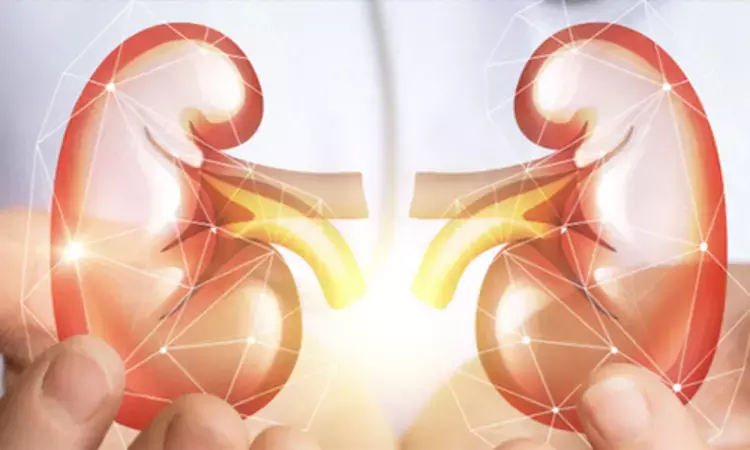- Home
- Medical news & Guidelines
- Anesthesiology
- Cardiology and CTVS
- Critical Care
- Dentistry
- Dermatology
- Diabetes and Endocrinology
- ENT
- Gastroenterology
- Medicine
- Nephrology
- Neurology
- Obstretics-Gynaecology
- Oncology
- Ophthalmology
- Orthopaedics
- Pediatrics-Neonatology
- Psychiatry
- Pulmonology
- Radiology
- Surgery
- Urology
- Laboratory Medicine
- Diet
- Nursing
- Paramedical
- Physiotherapy
- Health news
- Fact Check
- Bone Health Fact Check
- Brain Health Fact Check
- Cancer Related Fact Check
- Child Care Fact Check
- Dental and oral health fact check
- Diabetes and metabolic health fact check
- Diet and Nutrition Fact Check
- Eye and ENT Care Fact Check
- Fitness fact check
- Gut health fact check
- Heart health fact check
- Kidney health fact check
- Medical education fact check
- Men's health fact check
- Respiratory fact check
- Skin and hair care fact check
- Vaccine and Immunization fact check
- Women's health fact check
- AYUSH
- State News
- Andaman and Nicobar Islands
- Andhra Pradesh
- Arunachal Pradesh
- Assam
- Bihar
- Chandigarh
- Chattisgarh
- Dadra and Nagar Haveli
- Daman and Diu
- Delhi
- Goa
- Gujarat
- Haryana
- Himachal Pradesh
- Jammu & Kashmir
- Jharkhand
- Karnataka
- Kerala
- Ladakh
- Lakshadweep
- Madhya Pradesh
- Maharashtra
- Manipur
- Meghalaya
- Mizoram
- Nagaland
- Odisha
- Puducherry
- Punjab
- Rajasthan
- Sikkim
- Tamil Nadu
- Telangana
- Tripura
- Uttar Pradesh
- Uttrakhand
- West Bengal
- Medical Education
- Industry
Rare case of cobalamin c deficiency presenting with nephrotic syndrome, malignant hypertension and hemolytic anemia: A report

Researchers have identified that a rare metabolic disorder of cobalamin C (cblC) defect can manifest as nephrotic syndrome in infants. This further illustrates the need to consider metabolic diseases also in atypical cases of nephrotic syndrome. Modeled after a case report by Halil Tuna Akar and colleagues published in BMC Nephrology. The importance of early diagnosis, with consequent appropriate treatment, lies in the prevention of irreversible renal damage and potential improvement in patient outcomes.
Characterized by proteinuria, hypoalbuminemia, and edema, nephrotic syndrome represents a heterogeneous alteration induced by several underlying diseases, including metabolic diseases. One of these extremely rare causes is represented by the cobalamin C defect, an autosomal recessive disorder due to mutations of the MMACHC gene, which impairs vitamin B12 metabolism. Although classically associated with hematological and neurological symptoms, renal involvement in cblC defect is increasingly recognized but still very rare.
A 7-month-old male patient presented with fatigue and edema. Initial laboratory investigations showed anemia, thrombocytopenia, hypoalbuminemia, and proteinuria. Peripheral blood smear indicated hemolysis. Soon after, his condition deteriorated and he was admitted to intensive care due to respiratory distress on account of pleural effusion, hypertensive crisis, and severe anemia. Laboratory findings including anemia, thrombocytopenia, hypoalbuminemia, proteinuria, and hemolysis peripheral blood smear revealed hemolysis. High total plasma homocysteine levels were 1700.5 micromol/L. There were low methionine levels about 2.85 micromol/L. Genetic confirmation of defect in cblC with biallelic MMACHC gene mutations. Treatment was started on hydroxycobalamin 1 mg/day intramuscularly, along with folic acid and betaine. In view of extreme elevation of homocysteine levels of 232,000 μmol/L, the doses of treatment were doubled. Nephrotic syndrome and pancytopenia gradually improved, respiratory distress regressed and blood pressure stabilised. The patient did well at the last follow up visit with decrease in homocysteine levels to 4.6 micromol/L, though methionine levels remained low.
This case highlights the necessity of recognizing metabolic disorders, including cblC defects, even in atypical presentations of nephrotic syndrome. Early diagnosis and comprehensive treatment that includes supplementation of vitamin B12 may prevent irreversible renal damage. Although cblC defect represents one of the common causes for atypical hemolytic uremic syndrome, it should be included in differential diagnoses of nephrotic syndrome, especially if combined with hemolysis. This case represents one of the highest homocysteine levels ever reported in the literature and should be considered for increasing awareness and facilitating early diagnosis of nephrotic syndrome related to a defect in cblC.
Reference:
Akar, H. T., Yıldız, H., Öztürk, Z., Karakaya, D., Sezer, A., & Olgaç, A. (2024). Case presentation: a severe case of cobalamin c deficiency presenting with nephrotic syndrome, malignant hypertension and hemolytic anemia. BMC Nephrology, 25(1). https://doi.org/10.1186/s12882-024-03656-1
Dr Riya Dave has completed dentistry from Gujarat University in 2022. She is a dentist and accomplished medical and scientific writer known for her commitment to bridging the gap between clinical expertise and accessible healthcare information. She has been actively involved in writing blogs related to health and wellness.
Dr Kamal Kant Kohli-MBBS, DTCD- a chest specialist with more than 30 years of practice and a flair for writing clinical articles, Dr Kamal Kant Kohli joined Medical Dialogues as a Chief Editor of Medical News. Besides writing articles, as an editor, he proofreads and verifies all the medical content published on Medical Dialogues including those coming from journals, studies,medical conferences,guidelines etc. Email: drkohli@medicaldialogues.in. Contact no. 011-43720751


